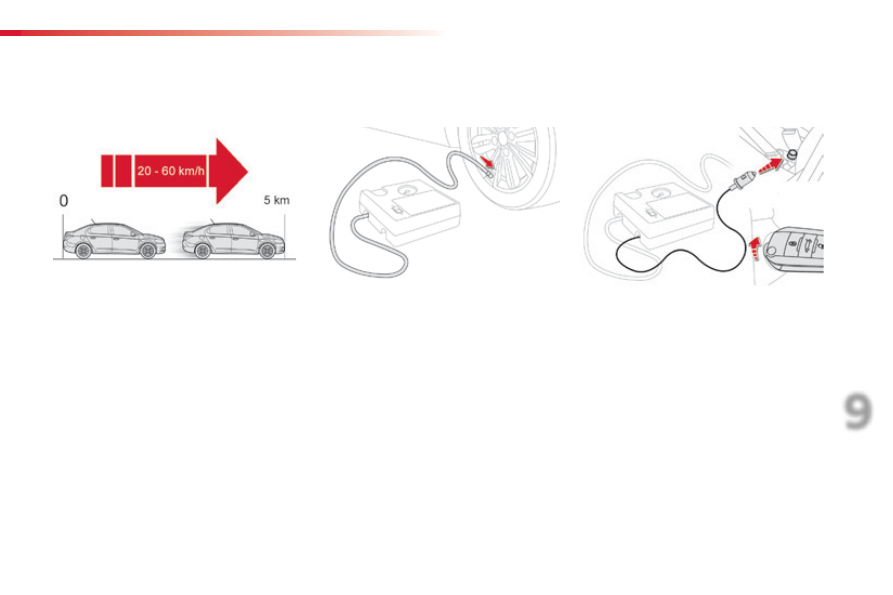Citroen C-Elysee (2017 year). Instruction - part 10

143
9
Practical information
C-elysee_en_Chap09_info-pratiques_ed01-2016
You can also use the compressor, without
injecting sealant, to check and if necessary
adjust the tyre pressures
F
Check that the compressor switch is at
the "O
" position.
F
Uncoil fully the electric cable, stowed under
the compressor.
F
Connect the compressor's plug to the
vehicle's 12 V socket.
F
Switch on the ignition.
F Place the switch in the "O
" position.
F
Remove the kit.
F
Drive immediately for approximately
three miles (five kilometres), at reduced
speed (between 15 and 35 mph (20 and
60 km/h)), to plug the puncture.
F
Stop to check the repair and the tyre
pressure using the kit.
Checking / adjusting tyre pressures
F
Remove the valve cap from the tyre and
place it in a clean area.
F
Uncoil the pipe stowed under the
compressor.
F
Screw the pipe onto the valve and tighten
firmly.